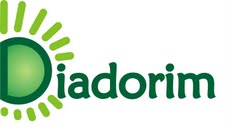ELASTOPLASTIC FINITE ELEMENT ANALYSIS OF THE TEMPER ROLLING PROCESS
DOI:
https://doi.org/10.26512/ripe.v2i23.21051Keywords:
Temper rolling. Finite element method. Flat rolling.Abstract
The cold temper rolling process is one of the last steps on the production of thin strips, and has many purposes. It is characterized for the low reduction applied on the strip, usually of the order of 0.5 ~5%. Temper rolling is used to improve the final flatness of the strip and its metallurgical properties, eliminate upper and lower yield stress behavior, achieve a better surface finishing and, sometimes, induce magnetic properties. The conditions in the roll bite are different from other kinds of cold rolling in reversible and tandem rolling mills. As was mentioned before, the reduction is very low, the deformation of the roll is very localized in the arc of contact area and there is considerable elastic spring back of the strip. These differences make the calculation of the rolling load very difficult. Furthermore there is lack of information of the process that show the need for a deeper research on the subject of the temper rolling process of metal strips. In this work the temper rolling process is modelled with the elastoplastic finite element method, dynamic explicit, in the plane strain state in order to a better understanding of the process. Modelling details are also given.
Downloads
References
Blazynski, T. Z. ed. Materials at high strain rates, Elsevier Applied Science, 1987.
Chandra, S., & Dixit, U. S., 2004. A rigid-plastic finite element analysis of temper rolling process. Journal of Materials Processing Technology, 152(1), 9-16.
Dbouk, T., Montmitonnet, P., Suzuki, N., Takahama, Y., Legrand, N., Ngo, T., & Matsumoto, H., 2013, June. Advanced roll bite models for cold and temper rolling processes. In Proc. 9th Int. Rolling Conf. & 6th European Rolling Conf., Venice, Italy.
Domanti, S. A., Edwards, W. J., Thomas, P. J., & Chefneux, I. L., 1994, June. Application of foil rolling models to thin steel strip and temper rolling. In Sixth International Rolling Conference, Dussedorf (p. 422).
Du, X. Z., Jiang, Z. Y., Bai, Z. H., Yu, X. L., & Zhang, Z. Y., 2010. A new calculating model of rolling pressure during temper rolling process. In Key Engineering Materials (Vol. 443, pp. 39-44). Trans Tech Publications.
Fang, X., Fan, Z., Ralph, B., Evans, P., & Underhill, R., 2002. Effect of temper rolling on tensile properties of C-Mn steels. Materials science and technology, 18(3), 285-288.
Fleck, N. A., & Johnson, K. L., 1987. Towards a new theory of cold rolling thin foil. International journal of mechanical sciences, 29(7), 507-524.
Fleck, N.A., Johnson, K.L., Mear, M.E. and Zhang, L.C., 1992, “Cold Rolling of Foil”, roc. I. Mech. E., 206, 119”“131.
Gratacos, P., & Onno, F., 1994, June. Elastoplastic models for cold rolling, application to temper rolling. In METEC Congress 94. 2 nd European Continuous Casting Conference. 6 th International Rolling Conference. (Vol. 2, pp. 441-445).
Gratacos, P., Montmitonnet, P., Fromholz, C., & Chenot, J. L., 1992. A plane-strain elastoplastic finite-element model for cold rolling of thin strip.International journal of mechanical sciences, 34(3), 195-210.
Kainz, A., Krimpelstätter, K., & Zeman, K., 2003, November. FE-simulation of thin strip and temper rolling processes. In ABAQUS Austria User’s Conference.
Lenard, J. G. (2014). Primer on flat rolling. 2nd ed. Elsevier.
LIU, Y., & LEE, W. H., 2001. Application of the preliminary displacement principle to the temper rolling model. KSME international journal, 15(2), 225-231.
Pawelski, H., 2000. Modelling of temper rolling considering surface change of strip. In 8 th International Conference on Metal Forming (pp. 285-293).
Roberts, W. L. (1988). Flat rolling of steel. Dekker.
Shigaki, Y., Nakhoul, R., & Montmitonnet, P., 2015. Numerical Treatments of Slipping/No-Slip Zones in Cold Rolling of Thin Sheets with Heavy Roll Deformation. Lubricants, 3(2), 113-131.
Sun, J. N., Huang, H. G., Du, F. S., & Li, X. T., 2009. Nonlinear finite element analysis of thin strip temper rolling process. Journal of Iron and Steel Research, International, 16(4), 27-32.
Sutcliffe, M. P. F., & Rayner, P. J., 1998. Experimental measurements of load and strip profile in thin strip rolling. International journal of mechanical sciences, 40(9), 887-899.
Wang, L. P., Lian, J. C., Wu, X. D. & Jia, X. (2005) A new rolling force model for dry thick temper rolling strip mill. Journal of materials processing technology, 170, 381-384.
Wiklund, O. L. O. F., Sandberg, F. R. E. D. R. I. K., & Lenard, J. G., 2002. Modelling and control of temper rolling and skin pass rolling. Metal Forming Science and Practice, Elsevier Science Ltd., Oxford, 313-343.
Zeman, K., Krimpelstaetter, K., Kainz, A., Finstermann, G., Glanner, G., & Paesold, D., 2005. Consideration of Circumferential Work Roll Surface Displacements in a Non-circular Arc Temper Rolling Model. In VIII International Conference on Computational Plasticity, CIMNE, Barcelona, Spain.
Downloads
Published
How to Cite
Issue
Section
License
Given the public access policy of the journal, the use of the published texts is free, with the obligation of recognizing the original authorship and the first publication in this journal. The authors of the published contributions are entirely and exclusively responsible for their contents.
1. The authors authorize the publication of the article in this journal.
2. The authors guarantee that the contribution is original, and take full responsibility for its content in case of impugnation by third parties.
3. The authors guarantee that the contribution is not under evaluation in another journal.
4. The authors keep the copyright and convey to the journal the right of first publication, the work being licensed under a Creative Commons Attribution License-BY.
5. The authors are allowed and stimulated to publicize and distribute their work on-line after the publication in the journal.
6. The authors of the approved works authorize the journal to distribute their content, after publication, for reproduction in content indexes, virtual libraries and similars.
7. The editors reserve the right to make adjustments to the text and to adequate the article to the editorial rules of the journal.









